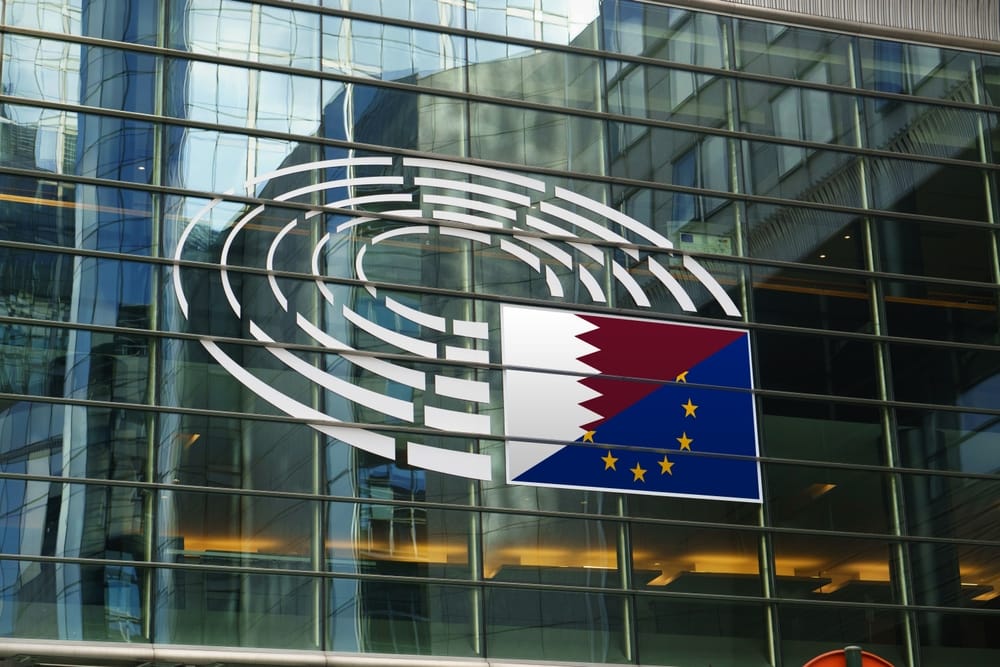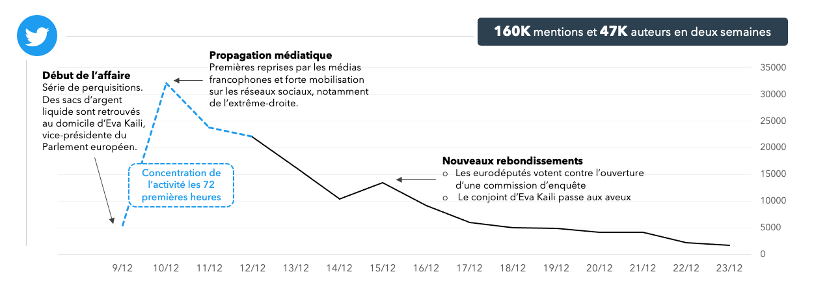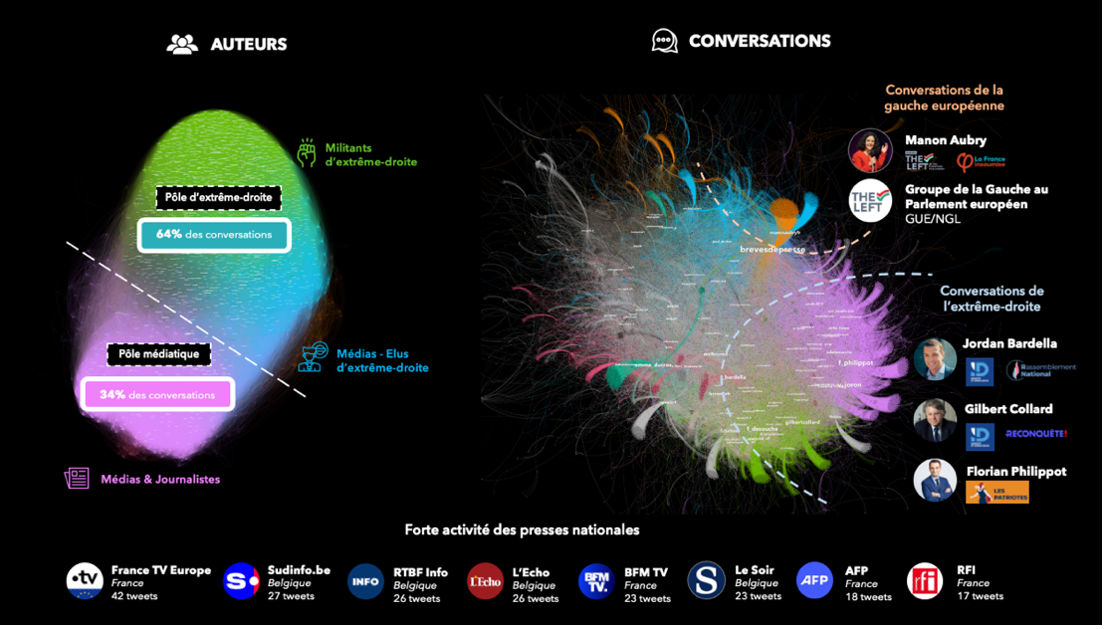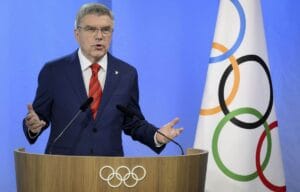Sommaire
Qatargate: An event mainly within the European bubble and an opportunity for the extreme right
Belonging to a criminal organization, money laundering, corruption... The European Parliament made headlines last month.

After a series of raids in early December, bags of cash were found at the home of Eva Kaili, who was still Vice-President of the European Parliament at the time. The S&D member is accused of receiving hundreds of thousands of euros from Qatar in exchange for defending the country's interests within the European Union. Other members of her party (Marc Tarabella, Maria Arena, Andrea Cozzolino) are also implicated in the huge political and financial scandal that would become known as Qatargate.
Afterward, we reflected on the mechanisms of media propagation and political appropriation of the affair and to what extent the European bubble was affected. Who are the stakeholders involved, and at what level are they situated? What are their underlying mobilization strategies?
Spread: Instant mobilization and localized media coverage

Immediately after the raids, Qatargate made front-page news, with widespread coverage in Belgian and French media. In Brussels, the newspaper Le Soir was the first to report the news, followed by other French-speaking Belgian media outlets. Mentions of Qatargate were notably dominated by the presence of European media, journalists, and correspondents.
However, beyond these initial reports (51% of discussions occurred within the first 72 hours), the volume of mentions quickly declined after the initial reactions, with subsequent developments failing to generate renewed attention.
One crime, two courts
The scandal mainly highlights the different mobilization strategies of political parties. Qatargate has served as a pretext for various actors to push their broader ideologies and claims.
Two main arenas of debate emerge, with opposing conversational logics depending on the political spectrum:
A majority arena (64% of mentions) is dominated by the European extreme right, which seizes the opportunity to blame the European Union as the main culprit of Qatargate, with a resurgence of strong Eurosceptic narratives.
MEPs from the Identity and Democracy group (Virginie Joron, Jordan Bardella, Gilbert Collard) dominate the conversational space and are particularly active regarding the scandal. They question the integrity of Ursula Von Der Leyen, challenge parliamentary votes, and accuse other political groups of complicity. In this conversational space, the misdeeds are generalized to the entire European bubble.
A second arena, represented by the European left (Manon Aubry, Raphaël Glucksmann), is far less visible and focuses on the narrative that the Qataris are the main culprits. The scandal is primarily used to denounce external and foreign interference in European affairs. Unlike the far-right, the left does not call into question the integrity of the European system. Their efforts are scattered, explaining why they do not appear as a unified community in mapping exercises. This mobilization is even more pronounced on LinkedIn, with many statements from MEPs (Pierre Larrouturou, Michèle Rivasi, Aurore Lalucq).

A closed European bubble
Although the extreme-right occupies a large portion of the debate space, it is not particularly impactful within the European sphere.
To assess the impact of the narratives from active stakeholders in Qatargate, we reconstructed the Twitter newsfeed of EU decision-makers and influential personalities using our topical impact assessment methodology. We found that the bubble remains confined to its usual spheres of influence at the community level. It is particularly receptive to the stakeholders that structure it, showing less sensitivity to more mobilized national actors. Two strong potential influencers emerged:
Despite Le Soir being the outlet that first exposed the scandal, it was not the most impactful. International media specializing in European affairs were the most influential within the bubble, highlighting the predominantly European and less national lens through which the scandal is viewed. Politico Europe was the most influential media outlet, reaching nearly half of the ecosystem.

It also emerged that liberal (Renew) and left-wing (GUE/NGL, Greens/EFA) political parties have the most potential influence within this European ecosystem.

In conclusion, this analysis shows that:
- A controversy like the corruption scandal in the European Parliament does not last beyond the initial emergence of the scandal.
- The media outlet that breaks the story is not the most impactful; the amplification happens elsewhere. The European bubble is more receptive to the positioning of international actors within it, less so to national stakeholders, despite their stronger mobilization. Traditional European media (Politico, Euractiv), along with left-wing and Renew parties, are the most effective levers of influence.
- Like any major media phenomenon, opportunistic strategies can be observed, with far-right parties largely dominating the debate on Twitter. The European left struggles to find its place on this social network, but it is on LinkedIn that it is beginning to make its voice heard.
- Political parties are using Qatargate to push their traditional agendas: the left denounces interference in European politics, while the far-right displays euroscepticism.
Photo credits : Shutterstock



